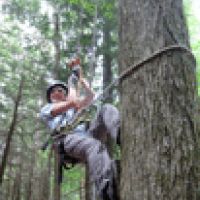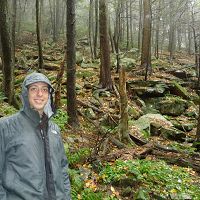Gaines et al., 2016
Rapid tree water transport and residence times in a Pennsylvania catchment
Gaines KP, FC Meinzer, CJ Duffy, EM Thomas, and DM Eissenstat (2016)
Ecohydrology, 9 (8): 1554–1565
-
Shale Hills, GRAD STUDENT
-
Shale Hills, INVESTIGATOR, COLLABORATOR
-
Shale Hills, INVESTIGATOR
-
Shale Hills, GRAD STUDENT
-
Shale Hills, INVESTIGATOR
Abstract
Trees are responsible for the majority of precipitation recycling over land and can affect soil water storage, stream flow, and ground water recharge. Historically, water has not often been limiting in eastern U.S. forests. As a result, little work has been done to understand the timing of water use by vegetation in these systems. We used deuterium tracer, sap flux, and anatomical techniques to study tree water transport on a forested ridge top in central Pennsylvania. Three trees of each of the dominant ring-porous species, Carya tomentosa (mockernut hickory), Quercus prinus (chestnut oak), and Quercus rubra (red oak), and the diffuse-porous Acer saccharum (sugar maple), were studied. We hypothesized that tracer velocity would be higher in the ring-porous species because of their greater vessel diameters and water transport efficiency, but that tracer residence time would be largely dependent on tree size. The tracer traveled at velocities of 1 to 18 m d-1 with maximum deuterium concentration in the crowns of the study trees being reached between 1 and 12 days after injection. Tracer residence time ranged from about 5 to 22 days with no evidence of longer residence times in larger trees. There was also no evidence of a relationship between tracer velocity and calculated xylem specific conductivity, which varied by nearly an order of magnitude between species. However, the soil-to-leaf driving force for water transport may be a strong determinant of tracer velocity across species, and shows promise as a proxy for sap velocity in hydrologic modeling applications.
Citation
Gaines KP, FC Meinzer, CJ Duffy, EM Thomas, and DM Eissenstat (2016): Rapid tree water transport and residence times in a Pennsylvania catchment. Ecohydrology, 9 (8): 1554–1565. DOI: 10.1002/eco.1747
 This Paper/Book acknowledges NSF CZO grant support.
This Paper/Book acknowledges NSF CZO grant support.
Explore Further






